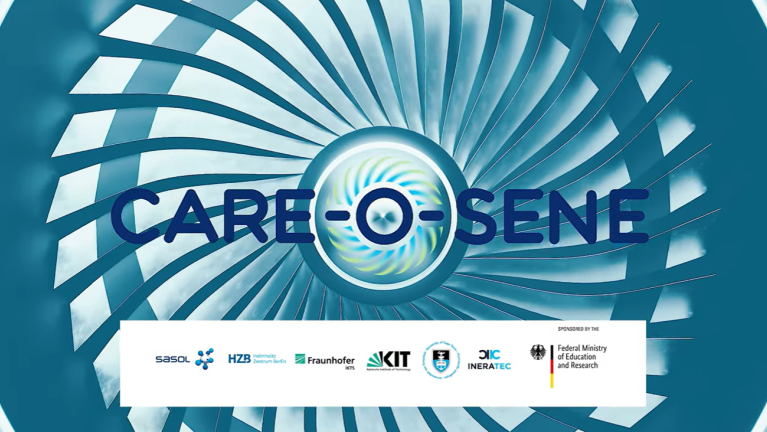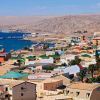“Aviation must become climate-neutral.”
Catalina Elena Jiménez is researching green kerosene as part of a German-South African project. In this interview she tells us about the innovative approach.
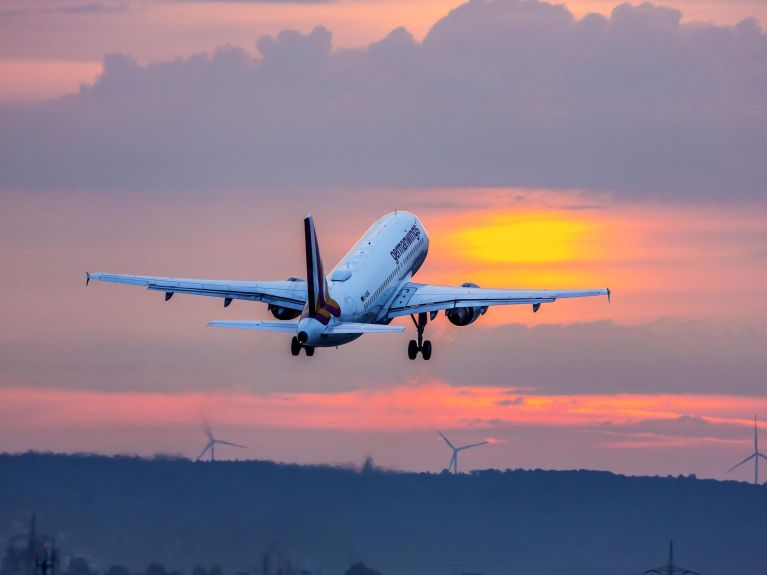
Flying is far and away the means of transport which causes most harm to the climate. According to the BDL, Germany’s national association for the aviation industry, emissions from aviation amount to around 5% of the global total of emissions which affect the climate. Clean kerosene would help protect the climate. Dr Catalina Elena Jiménez is a researcher at the Helmholtz-Zentrum Berlin (HZB). She is working with German and South African partners to research ways of improving catalysts for manufacturing climate-neutral kerosene.
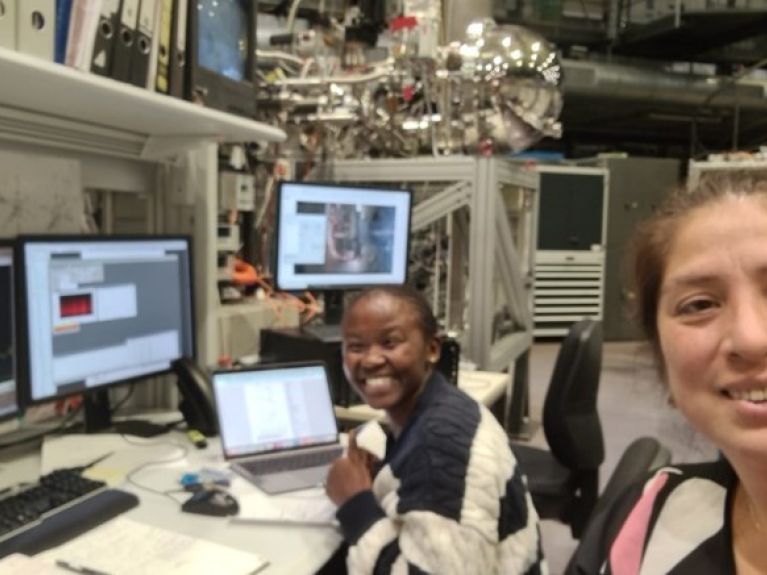
Dr Jiménez, the German-South African CARE-O-SENE project (short for Catalyst Research for Sustainable Kerosene) is part of Germany’s National Hydrogen Strategy and with €30m of funding spread over 3 years from the Federal Ministry for Education and Research. What was the objective of the project?
Aviation must become climate-neutral. Flying is the form of transport which causes greatest harm to the climate. Unlike with cars, you cannot replace fuel with an electric motor because batteries are too heavy for medium and long-haul flights. One achievable solution is kerosene from climate-neutral production rather than oil. In our project we are developing processes to make manufacturing sustainable kerosene economical at industrial scale.
Aviation must become climate-neutral.
How can you manufacture climate-neutral kerosene?
We use a chemical process which was invented in Germany almost a century ago, the Fischer-Tropsch synthesis. It generates liquid hydrocarbons from a synthetic gas consisting of carbon monoxide and hydrogen. What makes the product climate-neutral is producing the hydrogen using renewable energy on the one hand and producing carbon monoxide from carbon dioxide which is already in the air, such as in exhaust gases from industry. It works, but it’s still very expensive. We want to raise the kerosene yield from the Fischer-Tropsch synthesis. Until now it has only been between 50 and 70%, but we want to get that to over 80% by 2025. That would be the game-changer which would make manufacturing green kerosene economically attractive. And it looks like we’re going to achieve our goal.
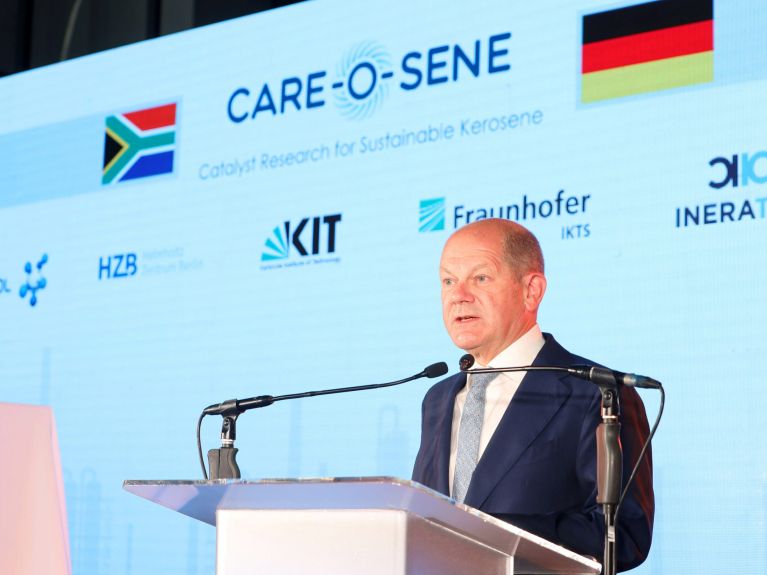
What is your researched focused on?
The key to making the process more efficient are the catalysts. That’s the name for substances which influence a chemical reaction but remain unchanged themselves. We’re working on a new generation of catalysts based on cobalt which dramatically accelerate the reaction. I’m leading experiments in the HZB’s BESSY II particle accelerator in Adlershof in Berlin. It accelerates electrons to very high speeds to generate extremely bright x-rays. BESSY II allows us to measure materials much better than with other equipment: it’s a bit like a high definition TV compared to an analogue television. We’re investigating exactly how various catalysts function in operation and what changes when you coat them. One focus for our research at HZB is innovative thin layer catalysts where the cobalt coating is only a few atoms thick. One area of application for this fundamental research is the CARE-O-SENE project.
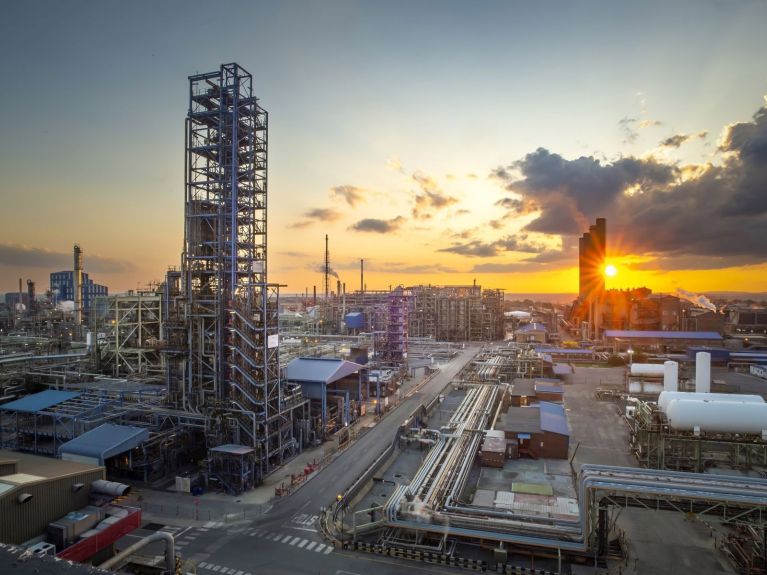
Alongside HZB, the consortium includes six other partners, with the South African Sasol company taking the lead. How is the work allocated?
Sasol has been using Fischer-Tropsch technology to produce liquid fuels for decades, so they are specialists in industrial applications of the process. We’re working together closely and we complement each another very effectively. The first generation of new catalysts which we developed have already been manufactured in large quantities and successfully tested in Sasol’s facilities in South Africa. Our other partners include INERATEC, a company which is currently building in Frankfurt one of the first commercial production facilities for climate-neutral petrol. We are also joined by the Fraunhofer Institute for Ceramic Technologies and Systems IKTS in Dresden, the Karlsruhe Institute of Technology and the University of Cape Town. PhD students from the two universities are working in my team in Berlin on a range of questions linked to catalysts. Overall, around 30 researchers are involved in CARE-O-SENE at HZB. If I’m needed for an experiment, I’ll often put in an early or night shift. I’ve been conducting research for almost 20 years now at Adlershof and I love the fact that my work never becomes routine!
Dieses YouTube-Video kann in einem neuen Tab abgespielt werden
YouTube öffnenThird party content
We use YouTube to embed content that may collect data about your activity. Please review the details and accept the service to see this content.
Open consent formWhat motivated you to come to Germany in 2005?
One of the leading scientists in my field at the time was teaching at TU Berlin. I was lucky enough to receive a DAAD scholarship for a six-month research stay and subsequent postdoc post. I found it hard to get used to living here, not least because of the weather. Now, though, my family and I feel just as at home in Germany as we do in Argentina. I have two kids. What drives me most strongly is the hope that research can help address global problems of the future. It’s great to work on a project that can actually make a big contribution.
____
Dr Catalina Elena Jiménez was born in Argentina and studied physics at the University of Buenos Aires and materials sciences at the Instituto de Tecnología Sabato. She received her PhD from TU Berlin in 2009 for her work on metal foams. Her research investigates energy transformation processes by using x-ray spectroscopy.
